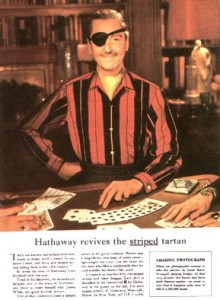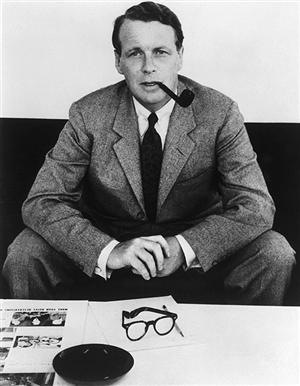 In the last 25 years, marketing has changed enormously. And yet, we still make the same damn mistakes we did 30 or 50 or 70 years ago.
In the last 25 years, marketing has changed enormously. And yet, we still make the same damn mistakes we did 30 or 50 or 70 years ago.
There’s no clearer illustration of this than the 1985 book Ogilvy on Advertising, written by Ogilvy & Mather founder, self-promoting advertising wizard, and distinguished pipe-smoker David Ogilvy.
This breezy tome meanders among good marketing advice, wrinkly war stories, and wishful predictions (“billboards will be abolished” and “candidates for political office will stop using dishonest advertising”). But its biggest virtues are its heaps of old, crazy ads from the 1940s through the 1980s.
If there is anything that ages quickly and ungracefully, it is advertising. The old layouts are dowdy; the copy is hokey or pokey; the typefaces are well out of fashion; and the pictures all have a high-contrast, overexposed feel. And reading the book, you realize a heck of a lot has changed in the practice of advertising itself in just the last 25 years, some good, some bad. For example:
- Nobody cares about print ads anymore. Print ads in major magazines or newspapers used to be the flagship of a national ad campaign. Then, print was the medium that provided the clearest, most intelligent expression of a brand. Now print is just another channel, and one generally subordinated to a central TV or online campaign. This is a little sad; where do you see good copy any more?
- Nobody reads. Ogilvy larded his print ads with long, explanatory texts, sometimes stretching for up to 1,000 words, both to blend into magazines and to stroke the reader’s ego. Today ads have barely a brand name an
 d URL, and are merely glorified pointers to a website. To be fair, all that verbiage (and more) has moved to the web — though nobody reads text on the web either.
d URL, and are merely glorified pointers to a website. To be fair, all that verbiage (and more) has moved to the web — though nobody reads text on the web either. - Americans are not as stupid as before. Yes, you heard me. Apparently 20th century Americans were as dumb as stone hammers. If the Hathaway Man with his jaunty eyepatch told you that the striped tartan is back in men’s shirts, then by god it was! An old man in a suit with a moustache could tell you what to think and what to buy, and that was good enough.
Now you might be tempted to think that the past has nothing to offer us modern marketers, but you’d be wrong. Because plenty hasn’t changed at all:
- We still disrespect and disregard the virtues of direct marketing. Ogilvy considered direct marketing his “secret weapon,” since it actually allowed marketers to actually test the efficacy of what they did. Ogilvy wishfully predicted that, in the future, research-driven marketers would create a “corpus of knowledge” of what works, earning higher sales. If you’ve ever been inside a modern marketing department, you’ll realize that most marketers are still mostly winging it, and have only learned to copy whatever ads they recently saw the competition put up.
- Most branding is still idiotic. Ogilvy presents a long list of pompous taglines from his days in advertising (CAPS are his):
- US Steel: We’re involved.
- Crown Zellerbach: We help make it happen.
- General Motors: People building transportation to serve PEOPLE.
- Siemens: Siemens turns ideas into PEOPLE.
- General Electric: 100 years of progress for PEOPLE.
Like Soylent Green, old taglines appear to be made of PEOPLE. And yet what do we have today?
- GE: GE Works
- Toyota: Moving Forward
- General Motors: A leading automotive company. (This is all I can figure out from their website!)
Yawn-inducing generalities, that’s what. Just like before! These soporific statements are the reason most marketers simply ignore corporate brand guidelines.
- Americans are still pretty stupid. Online ads — particularly those designed for direct response — have become stupider and cruder than ever before, with almost no text other than a single attribute, or a promise of “one weird trick” to solve all your problems. And we’re still hypocritical puritans: you can hit men in the groin a hundred times over and sell anything with sex, but god forbid you should ever show a naked breast.
If there’s anything we can learn from Ogilvy, it’s that the process of creating good marketing hasn’t changed much, even if the look has. Good marketing still requires both research and creativity, and good advertising needs to surprise, differentiate, and still sell to the customer. Were he alive today, Ogilvy’s acerbic advice and diagnostic checklists would still make many a day-to-day marketer blush with embarrassment — and probably make advertising quite a bit more interesting.

